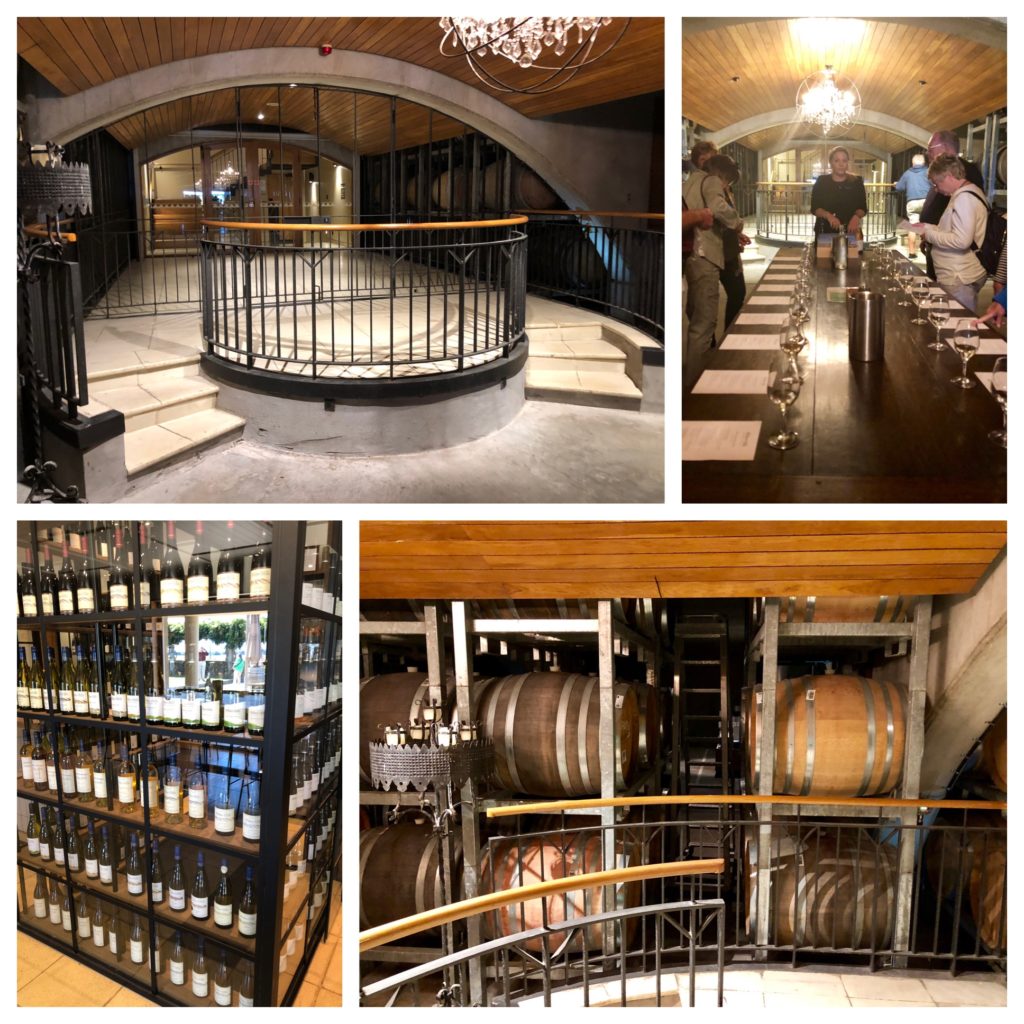Our fourth port in New Zealand was at the small town of Picton. We boarded a bus and drove about 40 minutes to the wine vineyards for our excursion, The Wines of Marlborough. New Zealand has become an important wine producing country. Grape growing and wine making in New Zealand only began in the 1980’s.
We visited three wineries in this region, Wither Hills, Forrest, and Spy Valley. About 80% of the wine grown in this region is made into Sauvignon Blanc wines. Some of the wineries included detailed talks about the grapes grown, harvesting techniques, and conditions needed for the various wines produced. Some wineries pretty much focused on the tasting.

Each tasting began with a Sauvignon Blanc, followed by a different white or rosé, a red Pinot Noir, and ending with a sweeter wine such as a Riesling or Gewurztraminer.
Small samples of each were tasted, so even though we tried 12 different sips over a three hour period, we did not feel lightheaded at all. The tasting rooms, or cellar doors, were all very nice and sometimes surrounded by the oak barrels used in the wine making process for the various wines.

The Forrest winery was located on a beautiful plot of land with interesting surroundings such as this water area.

We learned about and even tasted some of the grapes used for the wines. I was surprised to learn that red wine grapes, when squeezed, still give off a white wine juice. The color comes from the skins of the red grapes. I was also interested to learn that when the grapes are harvested affect the sweetness of the wine as well as how long the fermentation process is allowed to continue. Since sugars are turned into alcohol, a dryer (less sweet) wine is produced when the fermentation process is allowed to convert all of the sugars into alcohol or when the grapes are picked earlier in the season. Chemistry is everywhere.

The Spy Valley winery gets its name from the fact that located about five minutes further the up the valley are two huge antenna once used for spying.
